Just In
- 7 hrs ago

- 8 hrs ago

- 9 hrs ago

- 16 hrs ago

Don't Miss
- Sports
 Real Madrid vs Barcelona LIVE Streaming: Where to Watch EL CLASICO in India, UK, USA and other Countries?
Real Madrid vs Barcelona LIVE Streaming: Where to Watch EL CLASICO in India, UK, USA and other Countries? - Finance
 What Are Exchange-Traded Funds & Its Types? Here's A Comprehensive Guide On All Kinds Of ETFs!
What Are Exchange-Traded Funds & Its Types? Here's A Comprehensive Guide On All Kinds Of ETFs! - News
 From 400 Seats, Congress Is Unable To Contest 300 Independently: PM Modi
From 400 Seats, Congress Is Unable To Contest 300 Independently: PM Modi - Movies
 Manjummel Boys OTT Release Date Confirmed: Watch The Blockbuster Survival Drama Soon!
Manjummel Boys OTT Release Date Confirmed: Watch The Blockbuster Survival Drama Soon! - Automobiles
 How To Check Car Suspension – Top Tips You Need To Know
How To Check Car Suspension – Top Tips You Need To Know - Technology
 11 Exciting Features Coming With Android 15: Satellite Connectivity, App Pairs, App Archiving, and More
11 Exciting Features Coming With Android 15: Satellite Connectivity, App Pairs, App Archiving, and More - Education
 Assam Class 10 Result 2024 Declared: Anurag Emerged as the Top Performer With 593 Marks
Assam Class 10 Result 2024 Declared: Anurag Emerged as the Top Performer With 593 Marks - Travel
 Journey From Delhi To Ooty: Top Transport Options And Attractions
Journey From Delhi To Ooty: Top Transport Options And Attractions
Five Most Powerful Bhagavathy Durga Temples In Kerala
Popularly known as 'God's Own Country', Kerala is home to many ancient temples that enthral thousands of visitors with their historical and mystical elements. These temples are known to be extremely powerful and etch a special place in everyone's hearts.
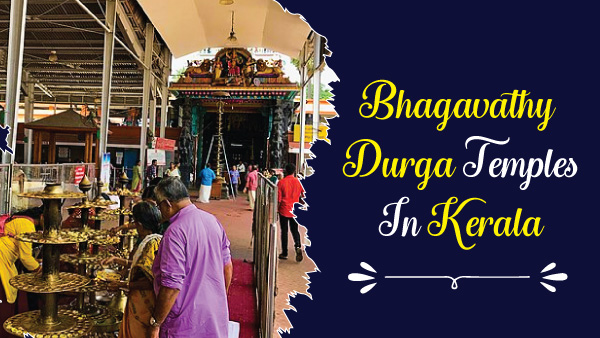
Dedicated to the Goddess Kali, these five temples are to be visited at least once in a lifetime to get a complete idea of their magnificence. Read on to know more.
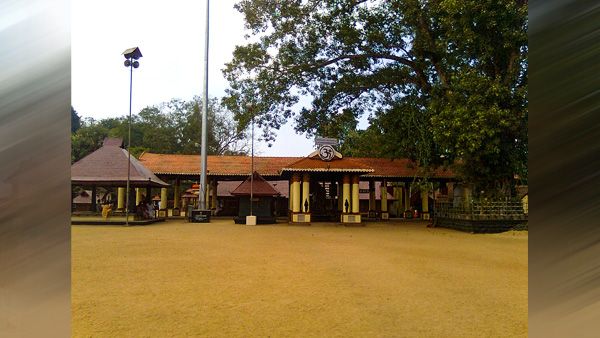
1. Chettikulangara Devi Temple
One of the most popular Durga temples in Kerala, and second to only Shabarimala as far as the income is concerned, Chettikulangara Devi Temple is the temple of Bhadra kali that is located at Chettikulangara in the district of Alappuzha in Mavelikkara taluk. The temple receives collections worth several crores of rupees annually. Sometimes a single-day collection runs more than one crore rupees. Prosperity and salvation in life is what they attain after worshipping her, as per a local legend. Vedic Agama worship is not followed here.
The Shabarimala temple prasadams such as Appam, Aravana, etc., are made there from the offerings of Nellu (paddy) made at the Bhagavathi temple. The income from the temple is widely used to take care of pujas, etc at other temples under the Travancore Devaswom Board. She is an embodiment of holy trinity and responsible for activating the Kundalini shakthi in her devotees as well.
Festivals Observed:
A number of important festivals such as Kumbha Bharani, Parayeduppu, Aswathy Ulsavam, Ethirelpu Ulsavam, etc are celebrated in a grand manner here. Known as the most favourite tourist destination in india, this temple was built by none other than the sixth avatar of Lord Vishnu, the Parashuram, Upadevathas like Ganapathi, Balakan, and Yakshini, also receive worship here. A significant feature of this temple is the mammoth oil lamp by name Kuthuvilakku, that is made of granite and filled with a thousand wicks.
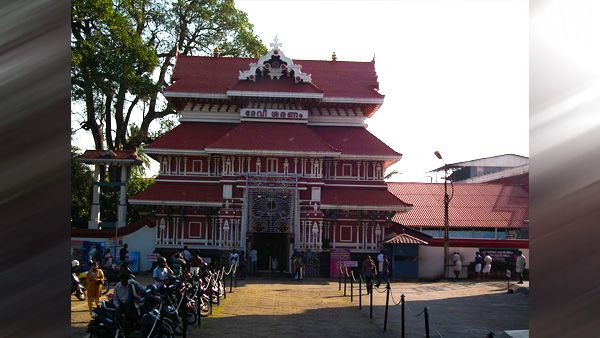
2. Paramekkavu Bagavathi Temple
One of the largest Bhagavathy temples in Kerala, the Paramekkavu Bagavathi Temple located in the midst of Thrissur, towards the east of the renowned Vadukkunathan Temple, is an architectural slice of heaven on the gods own country. Dating back to 1000 years in time, this shrine is governed by the presiding deity Goddess Bhagavathi who is an incarnation of Goddess Durga and the traditional Panchavadyam called Palachottil Melom is famous the nation over.
It is one of the largest and oldest Bhagavathy temples of Kerala that dates back to thousand years. It is known as a centre for the famous Thrissur Pooram festival. This temple is a regular witness to a vibrant procession of people and animals that gather from 15 different temples here. This procession that starts here, ends at the Vadakkunathan temple. During the times of Thrissur Pooram, this temple, is no less in splendour to that of the temple of Thiruvambady.
The temple complex has two demarcated shrines, one is Paramekkavu and the other is Melakkavu. The idol of Paramekkavu Bhagavathy, was initially made of wood which was found to be damaged some time later and hence a new wooden idol was made. A sacred farewell was conducted to the old idol before accepting the new wooden idol as the deity for worship.
Blood sacrifice of animals, to the Goddess is an ongoing tradition here, which was stopped due to the governmental interference. But after a long time, the priests decided to perform the sacrifice only on the festival days of Kodungallur Bhagavathy temple. The deity was later consecrated at a place where the blood sacrifice was being performed.
Festivals Observed:
This temple has the privilege of participating in the famous Thrissur Pooram festival during which fifteen decorated elephants are brought in procession from Paramekkavu to the Vadakkumnathan temple to celebrate the Pooram festival. Navarathri, Makara Chowa, Shivaratri are the other important festivals.
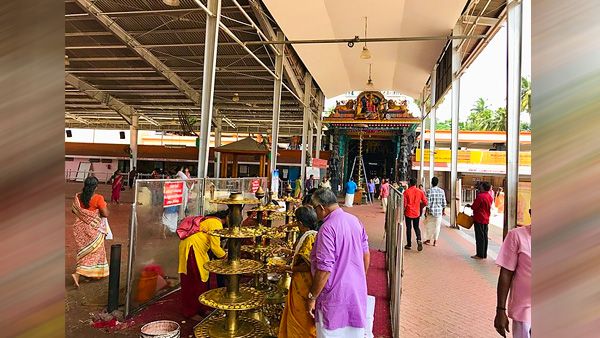
3. Attukal Bhagavathy Temple:
The Attukkal Bhagavathy temple in South Kerala brings together an annual gathering of lady devotees at Pongala Mahotsavam which is why this temple has come to be known as 'Sabarimala of Women'.
Attukal Bhagavathy Amman Temple is one of the famous shrines in south Kerala. It is situated in Trivandrum City. It is the place where Millions of women annually gather together for the famous Attukal Pongala Festival held in February/March. This actually has set a record and finds a place in the Guinness Book of Records. The gopuram exhibits a blend of both Tamil and Kerala architectural styles. You must have heard of Kannagi's legendary story (she is the heroine of Ilanko Adikal's 'Silapathikaaram'.) and here is where she has come to be enshrined as Attukal Bhagavathy Amman, the story of which is engraved in the sculptures here.
The main deity of the temple is Kannagi who coexists with other Upadevathas of the temple such as Madan Thampuran. A temple for Chattambi Swamikal, a famous Social reformer who chose this temple for his meditative pursuit can be found here.
Festival Observed:
Sweet
Pongal
is
the
dish
that
is
offered
to
Goddess
as
Prasad.
It
is
made
of
rice,
jaggery,
coconut
and
water.
The
Attukkula
Pongala
Festival,
goes
on
for
10
days,
in
the
month
of
February/March.
The
festival
lasts
for
10
days.
Attukal
Pongala
is
conducted
on
the
9th
day
of
the
Pongala
festival.
Women
from
all
over
the
globe
take
part
in
this
festival.
Nearly
5
km
of
the
area
around
the
temple
is
occupied
and
earmarked
for
the
Pongala
celebration.
To
participate
in
the
Pongala
festival,
you
need
to
qualify
by
observing
a
vrat
of
nine
days
prior
to
the
festival.
The entire ten-day-long festival is dedicated to singing the epic of Kannagi and the right to sing this epic song belongs to a particular family. Villakku Kettu is another kind of offering that is given to goddess during these ten days. Thaloppoli and Kuthiottam are two types of rituals observed by girls under 10 years and boys below 12 years of age in order to pray for the well being and prosperity of their families. Devi is taken out in a colourful procession to visit her brother the Dharmashasta. This entire festival ends with a blood sacrifice for the deity.
Attukal Devi fulfils every wish that is made in deep earnest and faith.
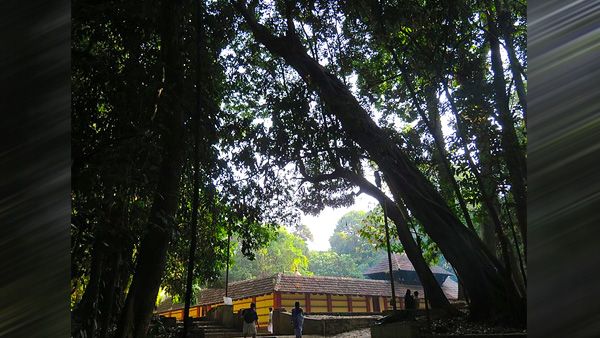
4. Iringole Bhagavathy Temple
Iringole Forest Temple otherwise popularly known as Iringole Kavu is a renowned Bhagavathy temple, located amidst the dense forest in the Pattal Village. The temple is about 35kms away from Ernakulam on the Aluva - Munnar road.
This temple is believed to be around 2746 years old. It became an active centre for pujas and devotee visits around 1200 years ago. In Dwaparayuga, prior to the birth of Krishna, his parents were imprisoned by the Demon Kamsa who feared that the 8th child of Devaki and Vasudeva, the parents of Lord Krishna would kill Kamsa. So when the 7th girl child, was born the demon Kamsa, in an attempt to kill her, swung her to the sky. She glided from his hands and shone like a bright star and disappeared. This place which witnessed her light and glow came to called Irnnol which gradually changed to Iringole whose deity idol appeared in a self-manifested form. The offerings to this deity are jaggery, thick payasam or kheer with jaggery, ghee and a special payasam named Chathussatham made of wheat.
Marriages, Ganapati homam's or reading of Ramayana scriptures are not held at the temple. Fragrant flowers or women wearing flowers are not allowed inside the temple. Only female elephants are allowed to carry the deity's effigy.
The huge trees surrounding the temple are believed as the Devas who came to pray to the Goddess for her blessings and stood there praising her and hence they are not felled for no reason and even a wood branch that falls on its own isn't used for any purpose.
Festival Observed:
During the annual temple festival season, the deity' is given a sacred bath called 'aarattu' every day. It is believed that on the day of Karthika in the Malayalam month of Vrischikam, visiting her would be of great benefit as it will ensure longevity for them and for their spouses as well. Unmarried would be ensured of a good alliance.
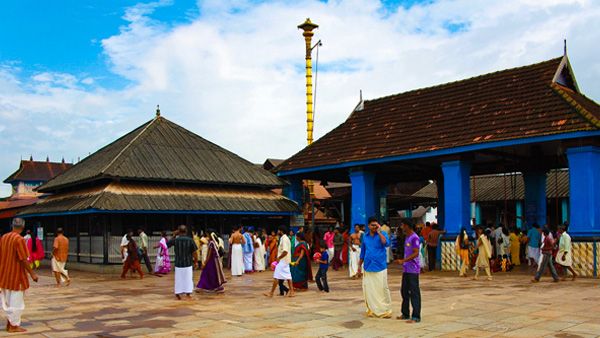
5. Chotanikkara Bhagavathy Temple
The Chottanikkara (modified pronunciation of Jyotiannakkara) Devi Temple is dedicated to Sri Bhagavathy or Mother Shakti. This Goddess ‘Keezhkkaavu devi' is believed to be the ‘Bhadrakali' (Mahakali), herself in her fierce or ‘ugra' form. She originated from the third eye of Lord Shiva with the intention of killing the demon Daruka. This Rajarajeshwari temple, is the abode of Sree Bhagavathi who takes on the form of Maha Saraswati in the morning, Maha Lakshmi in the noon and Maha Durga in the evening., this temple, located in Chottanikkara, a southern suburb of Kochi in Kerala, is one of the most popular temples in the state.
This temple shares architectural excellence with the temple of Sabarimala. She also resides along with the supreme lord Shiva, Ganesh & Lord Dharmasastha (Ayyappa) whose worship is carried on alongside. The temple is known for curing mental illness and disorders due to evil spirits. Guruthi Puja or blood sacrifice which is done to invoke Kali is being conducted every day.
Festival Observed
‘Chottanikara ‘Makam thozhal' is the famous religious temple festival observed here. The area in which the temple is situated was once a dense jungle that was a regular home to vampires called yakshis and raktharakshas.
After the ritualistic bath of "Devi" in ceremonial pond [Onakkuttichira] she is accompanied by Lord Sastha on the back of seven caparisoned elephants that reach the point of "Pooraparambhu" where they remain till 11 a.m. At the noon, the door of Sanctum Sanctorum closes for ucha pooja and then again reopens at 2 pm for the "Makam Darsanam." At this time, Devi appears in her fullest glory and splendour, which is when those who take a glimpse of her, would be blessed with fulfilment of their long-standing desire and prayers. During earlier days the darshan was the prerogative of only the upper classes. But now it is being extended to all cross sections of the society.
Disclaimer: The information is based on assumptions and information available on the internet and the accuracy or reliability is not guaranteed. Boldsky does not confirm any inputs or information related to the article and our only purpose is to deliver information. Boldsky does not believe in or endorse any superstitions.
-
 yoga spiritualityNavratri 2023: This Powerful Kawach Of Goddess Kali Will Remove Enemies, Know On Which Day To Recite It
yoga spiritualityNavratri 2023: This Powerful Kawach Of Goddess Kali Will Remove Enemies, Know On Which Day To Recite It -
 yoga spiritualityNavratri 2023 Vastu Tips: Remove These 5 Items From Home If You Don't Want To Make Maa Durga Angry
yoga spiritualityNavratri 2023 Vastu Tips: Remove These 5 Items From Home If You Don't Want To Make Maa Durga Angry -
 yoga spiritualityNavratri 2023: 9 Powerful Goddess Durga Mantras Along With Benefits, Significance
yoga spiritualityNavratri 2023: 9 Powerful Goddess Durga Mantras Along With Benefits, Significance -
 faith mysticismWhy Are Lemons Used In Durga Pujas And Tantric Practices?
faith mysticismWhy Are Lemons Used In Durga Pujas And Tantric Practices? -
 faith mysticismDurga Puja 2022: Know About The 500-Year-Old Durga Temple At Nartiang In Meghalaya
faith mysticismDurga Puja 2022: Know About The 500-Year-Old Durga Temple At Nartiang In Meghalaya -
 womenThe Legend Of Durga And Mahishasur: How The Goddess Won The Battle Against The Demon
womenThe Legend Of Durga And Mahishasur: How The Goddess Won The Battle Against The Demon -
 womenThe Legend of Goddess Durga: Know All About The Divine Feminine
womenThe Legend of Goddess Durga: Know All About The Divine Feminine -
 faith mysticismHere’s The Durga Aarti Lyrics In English Along With The Meaning
faith mysticismHere’s The Durga Aarti Lyrics In English Along With The Meaning -
 faith mysticismShri Durga Chalisa Lyrics In Hindi And English
faith mysticismShri Durga Chalisa Lyrics In Hindi And English -
 festivalsNavratri 2021, Day 1: Know About Mata Shailputri And How To Worship Her
festivalsNavratri 2021, Day 1: Know About Mata Shailputri And How To Worship Her -
 faith mysticismNavratri 2020: Important Elements Used For Making Goddess Durga's Idols
faith mysticismNavratri 2020: Important Elements Used For Making Goddess Durga's Idols -
 faith mysticismNavaratri 2020: Why Soil From Brothels Is Used For Making Goddess Durga’s Idol
faith mysticismNavaratri 2020: Why Soil From Brothels Is Used For Making Goddess Durga’s Idol


 Click it and Unblock the Notifications
Click it and Unblock the Notifications



